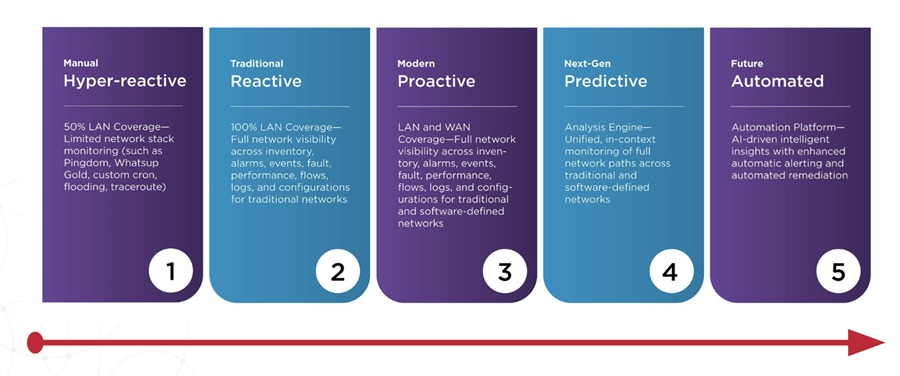As more applications migrate to the evolving private and public cloud infrastructure, and permeate through the sprawling distributed “new” IT environment, the Gartner published “five dimensions” of Application Performance Monitoring become essential requirements for any APM monitoring platform.
Being able to capture end-user experience, topology, deep dive monitoring of components and analytics will enable IT operations to isolate APM performance issues, reduce the MTTR for application services, and ultimately higher user satisfaction.
With the arrival and rapid adoption of Virtualization and Cloud infrastructure, reduction in costs for "incremental units" of computing power, the ability to more easily flex up and down as needed, and the lack of restrictions imposed by the traditional models, are all key drivers to migrate applications to this distributed cloud infrastructure.
However, with these benefits comes the added burden of high administration overhead from managing a virally sprawling and dynamic IT environment.
As the number of discrete virtual servers, components and resident applications explodes, performance monitoring and intelligent analytical needs to make rapid decisions will be critical for IT operations. Manually intensive legacy point monitoring tools will not be able to keep up in a dynamic and complex environment where applications can move in almost real time across the underlying IT infrastructure.
Of course, the better approach would be to utilize and adopt the APM “A” dimension – Automation in the monitoring platform to reduce the burden from routine administrative tasks for application monitoring. Implementing the right systems and processes and finding a monitoring solution which uses a good degree of automation is essential to gain back the efficiency lost from the increased complexity of distributed application infrastructure.
Automation in the area of monitoring will ensure consistency in performance monitoring and benchmarking, enabling IT Operations to make better and proactive decisions for application performance. As JP Garbani at Forrester said recently, gaining the right level of productivity in IT operations will come from using better tools, and specifically, automation.
Vikas Aggarwal is CEO of Zyrion.


